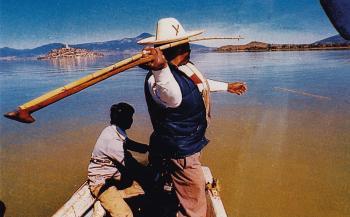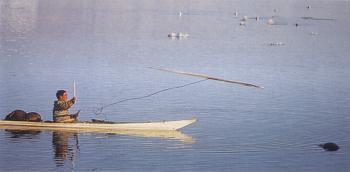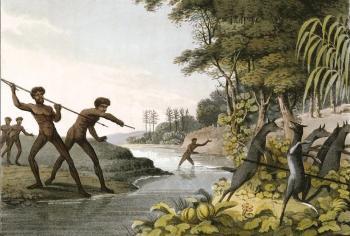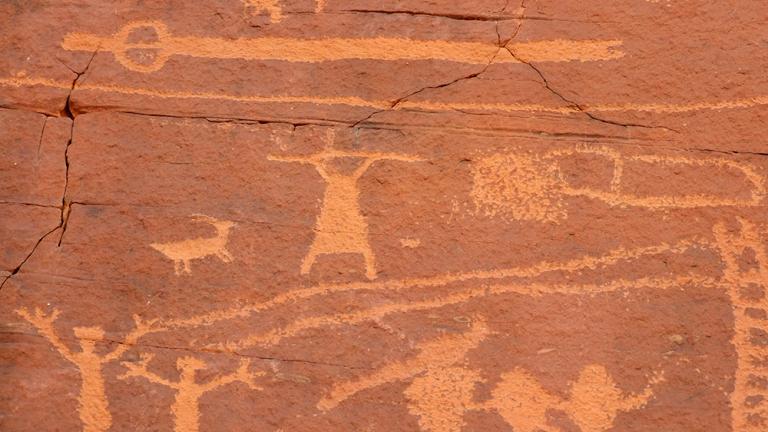The spearthrower through the world

The oldest spearthrowers' known in this part of the world come from USA (10th millennium B.C.), Patagonia (9th millennium B.C.), Peru (6th millennium B.C.) and Mexico (4th millennium B.C.). The use of the spearthrower seemed to cease not long after the Spanish conquest except on the Patzcuaro Lake (Mexico) and in the Amazon basin, spearthrowers were used until the middle of the 20th century, but their use is restricted to ceremonies or sports.

The spearthrower is found on a territory spreading from the Amur River in eastern Siberia to the eastern coast of Greenland.
It is made of a more or less narrow driftwood board and is essentially associated with a harpoon to hunt sea mammals and aquatic birds, almost exclusively from kayaks.

Australian spearthrowers are used for warfare, duelling, legal proceedings, hunting big and small games (kangaroos, emus, ducks...) and fishing. They are usually made from several materials with a hook made of wood, bone, shell or tooth.
The most interesting source on the spearthrower antiquity is found in Australian Rock Art of which the Arnhem Land’s paintings are the most impressive. The earliest spearthrower representations seem to belong to the “Northern running figures”, a painting style spanning between 10,000 and 6,000 B.C.
In Melanesia, spearthrowers are found mainly in northeastern New Guinea, more rarely on the southwest coast. Spearthrowers are not restricted to hunting and the Papous, as well as other cultures, use this weapon for war and for head-hunting, an activity that links ritual, religious or political practices. Spearthrowers are also used by women for fishing in rivers and lakes.



